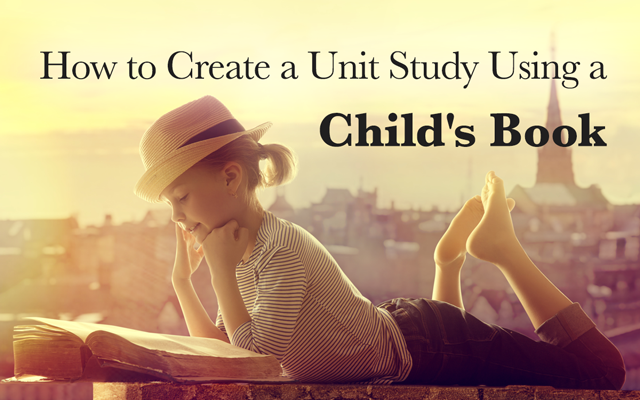How to Create a Unit Study Using a Child’s Book


Tops and Bottoms (a Caldecott Honor Book) by Janet Stevens is one of our favorite picture books. At first glance, one could wonder if the book is appropriate for Christian homeschoolers. After all, the main character in the story succeeds by being deceitful. However, the book can be used to teach many positive concepts. Here are some suggestions for using it as a unit study.
Bible/copywork
Psalms and Proverbs are full of verses on deceit and laziness. Choose at least one of these verses for memorization or copywork:
Laziness
• Proverbs 10:4, 12:24, 12:27, 19:15, 26:15
Deception
• Psalm 32:2, 36:3, 52:2, 119:29; Proverbs 14:8
Character
• Laziness. Bear was content to let others do his work. How did this lead to problems for him? How do you feel when someone is lazy? How can you avoid laziness? Read A Children’s Book about Being Lazy by Joy Berry.
• Trickery/deception. Hare tricked Bear several times. How else could Hare have solved his problem? How do you feel when you are tricked? How can you avoid being tricked?
Math
• Create charts for grouping vegetables by top/bottom/middle, color, or type.
• Survey at least ten family members or friends. What is their favorite vegetable? Create a chart or graph of the results.
Science
• Make a chart or poster to classify vegetables. Use pictures from file folder fun (http://filefolderfun.com/Pages/KindergartenHealth/FruitorVeg or http://filefolderfun.com/Pages/FirstGradeHealth/FoodPyramid) or seed catalogs. Classify into tops, bottoms, and middles.
• Grow your own vegetables. Grow at least one that grows above the ground, one root vegetable, and one in which the middle is eaten.
• Read The Vegetables We Eat by Gail Gibbons. Classify vegetables according the categories found in this book.
Health
• Read Good Enough to Eat by Anne Rockwell. Talk about the nutritional value of vegetables. Make another chart or poster for vitamins, carbohydrates, iron, etc.
• Visit the website www.edsaid.org. Click on each vegetable. Listen to the video and talk about the information. Click on the recipe link (Season 2 only) and make the recipe.
Social Studies
• Visit a community garden, farmers’ market, or CSA. How do the gardeners and farmers decide what to plant? How many vegetables can you identify? If you are allowed, try some samples.
Language Arts
• This story is an adaptation of an African American folktale, probably an Uncle Remus story. Read another Uncle Remus story or adaptation. Jerry Pinckney has some excellent adaptations.
• Read another book about vegetables. (See the list below for suggestions). Classify those vegetables.
• Write a poem about vegetables.
• Rewrite the story. How could Hare and his family have solved their problem without resorting to trickery?
• Work one of the activities from www.edsaid.org.
Art
• Make a potato print picture.
• Make a vegetable alphabet book.
• Create a drawing, painting, or collage of vegetables
Other Books about Vegetables
Growing Vegetable Soup by Lois Ehlert
The Victory Garden Alphabet Book by Jerry Pallotta
Eating the Alphabet by Lois Ehlert (includes fruit and nuts)
The Carrot Seed by Crockett Johnson
Lily’s Victory Garden by Helen L. Wilbur
Karen Robuck is a homeschooling mother of two who, at the time of writing, were in seventh and fourth grades. She holds degrees from Blue Mountain College, a Christian liberal arts college in northeast Mississippi, and from the University of Southern Mississippi. She considers her homeschooling style to be literature-based eclectic with a dash of Charlotte Mason. Formerly a teacher and librarian, she is currently working in media support for a local community college. She lives in Pontotoc, MS with her husband, two children, and four cats.














































